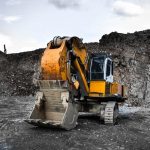South Africa has a coastline of over 2,850 kilometres and an extensive, complex and vastly expensive infrastructure has developed along the coast over the past 100 years. This ranges from luxury houses at coastal holiday resorts and quaint villages, to rail and industrial infrastructure in the form of warehouses, cranes, electrical pylons and structural steel. The bulk of this hugely costly infrastructure is concentrated up the west coast at Saldanha Bay, around Cape Town, along the Garden Route, at smaller cities such Port Elizabeth and East London, around the Durban metropolis and at the Richards Bay coal terminal.
Billions of rands have been invested at the coast over the past 50 years in structural steel, power line masts, roofing, water treatment plants, wastewater process units, cladding of factory structures, luxurious housing with architecturally designed features and expensive roof sheeting. Can these assets and investments actually weather the elements and last long enough to ensure a good return on investment for home and business owners and municipalities?
In truth, South Africa’s coastal infrastructure is a mix of good and bad design, and in some cases, poor steel protection. Consulting engineers and designers seem to need intensive education on the important role that zinc hot dip galvanised steel can play in ensuring a long life (+30 years) for exposed structural steel and other steel fixtures.
In South Africa with our long and very corrosive coastline, it is absolutely vital that civil engineers, consulting engineers and architects utilise hot dip galvanised steel structures and even galvanised reinforcing steel in concrete structures exposed to coast salt spray and sea spray.
It’s the chlorides in sea spray and sea mist that corrode steel more than anything else. This puts South Africa’s coastal infrastructure at high risk and we have to inform and impress on design engineers how critical it is to use galvanised steel (as well as aluzinc) and galvanised roof sheeting to keep the chlorides out.
There is no need for coastal steel infrastructure to be damaged by chloride corrosion and sea water corrosion if the right materials are used to build structures, roofing or steel items. The South African Bureau of Standards (SABS) offers a range of normative standards for working with hot dip galvanising of steel.















